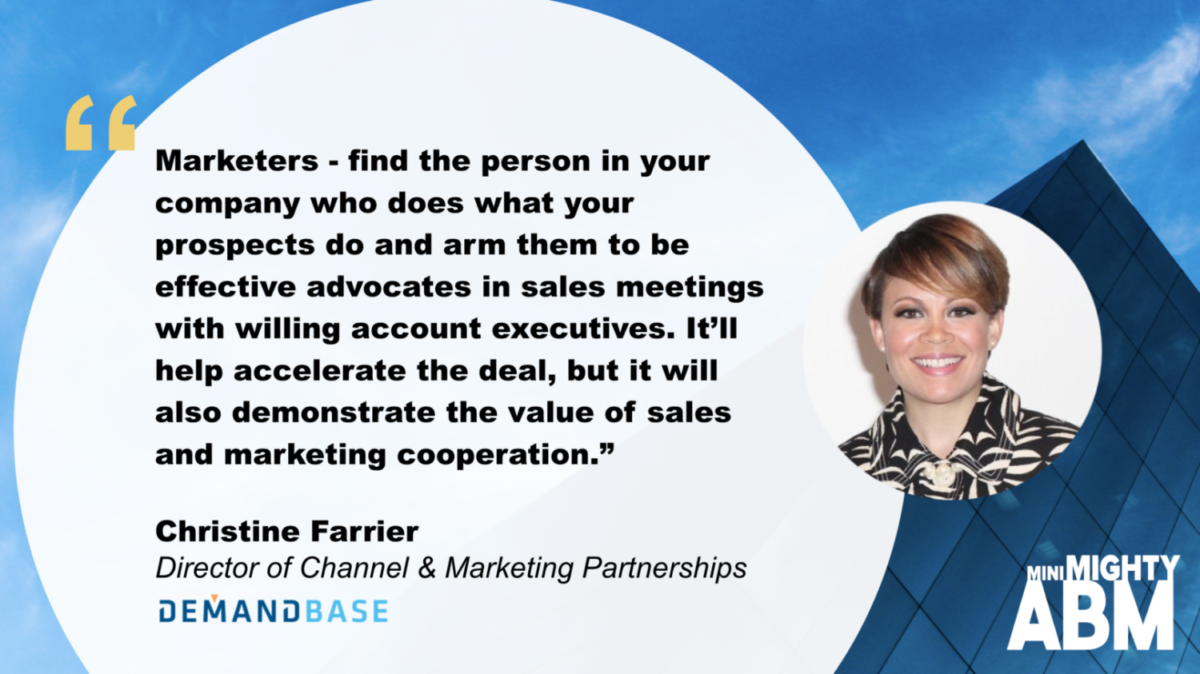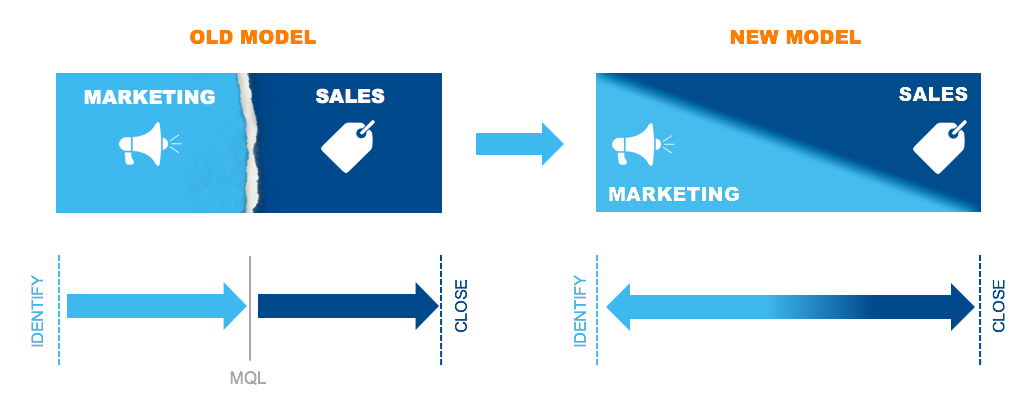How to demolish your sales & marketing silo
Mini Mighty ABM

This article is part of the Mini Mighty ABM series where we ask top experts in ABM to share one actionable idea that you can use at work today. These tips are mini, but mighty. For more, visit ABM Revealed.
Once upon a time, I came from the world of finance where salespeople would hide their target accounts from the marketing team. They preferred to painstakingly record their account activities in black and red notebooks rather than run the risk of anyone ‘bothering’ their contacts.
I can say firsthand that’s a frustrating place to be as a marketer. You’re completely cut off from the end result of your hard work. You tee up leads but you never see where they go. Nobody wins—least of all your customers.
“Help me help you,” I’d implore the sales team. But I knew that it wasn’t personal. The wall between us was reinforced by too many years of built-up tension and distrust—the unfortunate norm for sales and marketing at lots of companies.
Here at Demandbase, it’s totally different, and in under two minutes, I’ll share one concrete idea for being the change you want to see at your company.
The old way
Silos exist because they’re built into most organizational charts. Product teams design. Engineers build. Salespeople sell. It’s an assembly-line, and each team tosses work over the fence to the next. The divide is particularly apparent between sales and marketing.

In the old model, when a salesperson comes to you in a rush and asks for a technical white paper, you, as the marketer want to say yes. You want to work together. But you know that to accept their fence-toss would be a mistake.
You know it’d be more productive to ask the salesperson what questions they’re getting from the buyer. What’s the real objection? Can you answer it by having your CTO talk to their CTO instead? But if you lack that foundational layer of trust, sales won’t hear it. You’ll either create the white paper or they’ll ignore you, and nobody gets the result they want.
It’s stressful. At Demandbase, I talk to lots of marketers who want to get into ABM. Often, our conversations turn into full-blown therapy sessions because they know the first step will require a heart-to-heart conversation with sales.
Silos and distrust are more than an annoyance. They make it harder for your company to help customers solve their problems, which is what we’re all here to do. I’ve come to think of ABM as a communication tool because it reopens that channel, even at businesses with serious silos. And you don’t need budget or buy-in to start the conversation—just the will to set your organization on a new dramatic success trajectory.
The new way
You can demolish your sales and marketing silo with guerilla tactics starting today. My favorite: Internal peer champions (IPC). Find the people within your company who best represent your buyer—whether they’re marketers, project managers, or legal counsel—and bring them into the sales process. While this is hardly a novel approach, an ABM strategy allows you to supercharge IPC involvement by focusing on the segment of the target accounts most likely to benefit from their inclusion (say late-stage deals) and arming them with messaging you know will resonate or canned presentations that can be easily customized as the situation merits.
Then scour your company for willing sales recruits: Account executives who aren’t steeped in the old ways or who are hungry, frustrated, or about to miss their quota. Have IPCs join their calls or meetings that meet the predetermined segmentation.
Here at Demandbase, we sell to marketers. Our salespeople can bring a real-life Demandbase marketer into their meeting to be the customer’s advocate. Unlike the salesperson, I’m a peer and free to ask prospects, “Hey girl, what’s your budget? What’s the biggest challenge you’re dealing with right now? Why are you scared to get started with ABM?” My presence creates a safe space. I can ask questions salespeople don’t think to ask and build relationships in ways they alone can’t.
This has two impacts: It helps accelerate the deal, and just as important, it demonstrates that sales and marketing collaboration means free deal-closing help.
When it works, you’ll see the effects in the form of high-fives in the hallways. Hugs. Salespeople will send their marketers and IPCs flowers or wine. It’ll get salespeople thinking that the idea of hiding their deals from the marketing team is total nonsense—in fact, they’d like your help more often. And that’s how you demolish your silo.
My actionable takeaway:
Find the person in your company who does what your prospects do (your internal peer champion, or IPC), identify segments for their inclusion, prep them for success, and bring them into sales meetings. It’ll help close the deal, but it’ll also demonstrate the value of sales and marketing cooperation.

Christine Farrier
Director, Channel & Partner Marketing, Demandbase
Christine Farrier brings together over a dozen years of marketing, communications and entrepreneurial expertise primarily focused in the investment banking and marketing technology industries.
